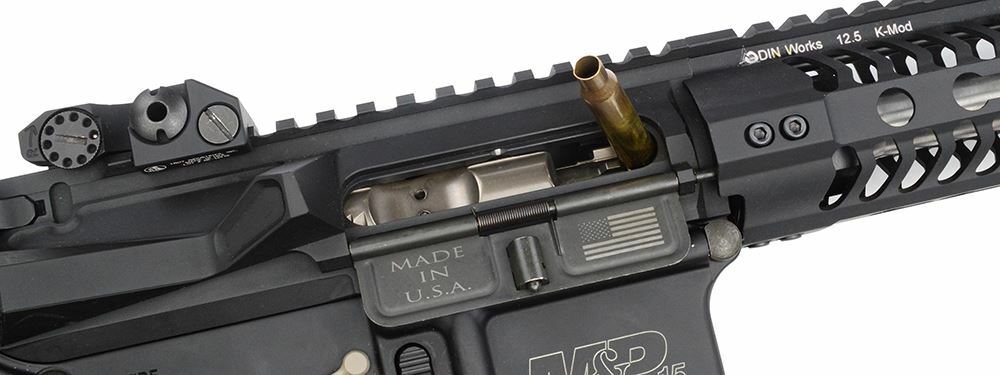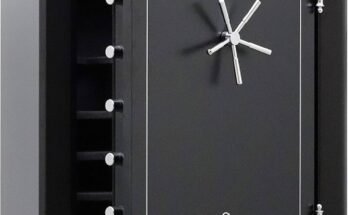The most common malfunctions with an AR-15 are failure to feed and failure to eject. Regular cleaning and proper lubrication often fix these issues.
The AR-15 is a popular and versatile rifle, but it can experience malfunctions. Understanding common issues and their fixes helps keep your rifle in top condition. Failure to feed occurs when a round doesn’t properly enter the chamber, often due to dirty magazines or insufficient lubrication.
Failure to eject happens when spent casings don’t exit the rifle, which can be caused by a dirty chamber or a weak extractor spring. Regular maintenance, such as cleaning and lubricating your AR-15, is essential. Ensuring your magazines are clean and using high-quality ammunition also reduces the likelihood of these malfunctions. Keep your AR-15 reliable and ready for action by addressing these common problems promptly.
Failure To Feed
The AR-15 is a highly reliable firearm, but it can experience issues. One common problem is Failure to Feed. This malfunction occurs when a round does not properly enter the chamber. Understanding the causes and fixes can keep your AR-15 running smoothly.
Magazine Issues
Magazines are often the root cause of Failure to Feed. Here are common magazine-related problems:
- Worn-Out Spring: A weak spring can’t push rounds up properly.
- Damaged Feed Lips: Bent or broken feed lips can misalign rounds.
- Debris: Dirt and grime can interfere with feeding.
To fix these issues:
- Inspect the magazine for visible damage.
- Clean the magazine to remove debris.
- Replace worn-out springs or damaged magazines.
Bolt Carrier Group Problems
The Bolt Carrier Group (BCG) is another critical component. Common BCG issues include:
- Carbon Build-Up: Excessive carbon can hinder movement.
- Worn Parts: Worn gas rings or bolts can cause feeding issues.
- Improper Lubrication: Lack of lubrication can create friction.
To address these problems:
- Disassemble the BCG for a thorough cleaning.
- Inspect for worn or damaged parts and replace them.
- Lubricate the BCG with a quality gun oil.
By focusing on these areas, you can resolve Failure to Feed issues effectively.

Credit: gundigest.com
Failure To Eject
The AR-15 is a popular rifle known for its reliability. Yet, even the best firearms can face malfunctions. One of the most common issues is the failure to eject. This problem occurs when a spent cartridge does not eject properly. Understanding and fixing this can keep your AR-15 running smoothly.
Extractor Troubles
The extractor is crucial for ejecting spent cartridges. If the extractor is dirty or damaged, it can’t grip the cartridge properly.
- Dirty Extractor: Clean the extractor using a brush and solvent.
- Worn Extractor: Check for wear and replace if necessary.
Keeping the extractor clean and in good condition prevents many ejection issues.
Gas System Issues
The gas system in an AR-15 is vital for cycling rounds. If the gas system is not functioning correctly, it can cause ejection problems.
| Issue | Solution |
|---|---|
| Gas Block Obstruction: | Inspect and clean the gas block. |
| Gas Tube Blockage: | Ensure the gas tube is clear of debris. |
| Improper Gas Rings: | Check the gas rings for wear and replace if needed. |
Regular maintenance of the gas system ensures your AR-15 ejects rounds efficiently.
Double Feeding
Double feeding in an AR-15 can be frustrating. This issue happens when the rifle tries to load two rounds at once. Identifying the root cause is essential for fixing this problem.
Worn-out Magazines
Magazines play a crucial role in feeding rounds smoothly. Over time, magazines can wear out. This leads to double feeding issues.
Inspect your magazines regularly. Look for any visible damage or wear. If the lips of the magazine are bent, they won’t hold rounds correctly.
- Check for bent feed lips. If bent, replace the magazine.
- Clean the magazine. Dirt can cause feeding problems.
- Use quality magazines. Cheap ones can cause double feeding.
Damaged Extractor
The extractor ensures the spent case is removed from the chamber. A damaged extractor can cause double feeding.
To check the extractor:
- Disassemble the bolt carrier group.
- Inspect the extractor for chips or breaks.
- If damaged, replace the extractor immediately.
Sometimes, the extractor spring can lose tension. Replacing the spring can solve the problem.
Ensure the extractor is clean and free of debris. This will help it function properly.
Failure To Fire
Failure to fire can happen for various reasons. Understanding the root cause helps in quickly fixing the issue. Let’s explore the common reasons for failure to fire and how to address them.
Misfiring Primer
A misfiring primer is a common issue. This usually happens due to a defective primer in the cartridge. Here’s how to diagnose and fix it:
- Inspect the primer: Check if the primer shows a dent.
- Replace the ammo: If the primer is dented but didn’t fire, replace the cartridge.
- Clean the firing pin: Sometimes, dirt can prevent the primer from igniting.
If the primer is not dented, the issue might lie elsewhere. Move to the next step to check for light hammer strikes.
Light Hammer Strikes
Failure To Lock Back
The AR-15 is a versatile rifle but can face malfunctions. One of the common issues is the failure to lock back. This means the bolt does not stay in the rear position after the last shot. Understanding the reasons behind this can help fix the problem.
Bolt Catch Issues
The bolt catch plays a key role in locking the bolt back. If it is dirty or worn out, it may not function properly. Here are some steps to address bolt catch issues:
- Inspect the bolt catch for wear and tear.
- Clean the bolt catch with a brush and solvent.
- If damaged, replace the bolt catch with a new one.
Regular maintenance helps in keeping the bolt catch in good condition.
Weak Ammunition
Using weak ammunition can also cause failure to lock back. Weak rounds might not generate enough gas pressure. This pressure is needed to push the bolt back fully. To check if ammunition is the issue, follow these steps:
- Test different brands of ammunition.
- Use higher-quality or military-grade rounds.
- Ensure the ammunition meets the rifle’s specifications.
Ammunition that meets the rifle’s requirements will ensure proper functioning.

Credit: www.wingtactical.com
Failure To Chamber
Failure to Chamber is a common issue with AR-15 rifles. It occurs when the rifle fails to load a new round into the chamber. This problem can disrupt your shooting experience. Understanding the causes and fixes can help you maintain your AR-15 efficiently.
Dirty Chamber
A dirty chamber can cause failure to chamber. Residue builds up over time. This residue can prevent the round from seating properly. To fix this, clean your chamber regularly.
- Use a chamber brush.
- Apply a solvent to break down the residue.
- Scrub thoroughly to remove all debris.
- Wipe clean with a dry cloth.
Maintaining a clean chamber ensures smooth functioning. It also prolongs the life of your AR-15.
Improperly Sized Ammunition
Improperly sized ammunition can also cause failure to chamber. AR-15 rifles require specific ammo sizes. Using the wrong size can jam the chamber. Always check the specifications before loading.
- Refer to the rifle’s manual for the correct ammo size.
- Inspect each round for defects.
- Only use high-quality ammunition.
Using the correct ammo ensures reliable performance. It also reduces the risk of malfunctions.
| Cause | Solution |
|---|---|
| Dirty Chamber | Clean the chamber regularly. |
| Improperly Sized Ammunition | Use the correct ammo size. |
By addressing these issues, you can keep your AR-15 in top condition. Regular maintenance and proper ammo selection are key.
Bolt Override
The AR-15 is a popular rifle known for its versatility. However, it is not without issues. One common malfunction is the Bolt Override. This occurs when a spent casing or round gets stuck above the bolt. This can cause the rifle to jam, making it inoperable. Understanding this problem and knowing how to fix it is crucial for any AR-15 owner.
Weak Recoil Spring
A weak recoil spring can contribute to bolt override issues. The recoil spring is responsible for pushing the bolt carrier group back into place. If the spring is weak, it can fail to move the bolt properly.
Here are the steps to fix it:
- Disassemble the rifle as per the manual.
- Inspect the recoil spring for wear and tear.
- Replace the weak spring with a new one.
- Reassemble the rifle and test it.
Using a high-quality recoil spring can help prevent future issues. Always keep spare parts handy to avoid delays during critical times.
Buffer Tube Problems
Buffer tube problems are another cause of bolt override malfunctions. The buffer tube houses the buffer and the recoil spring. If the buffer tube is damaged, it can impede the bolt carrier group.
Fixing buffer tube issues involves:
- Remove the stock and buffer tube.
- Inspect the buffer tube for dents or bends.
- If damaged, replace it with a new buffer tube.
- Reassemble the parts and test the rifle.
Ensuring the buffer tube is in good condition is essential. Regular maintenance can help identify issues early. Always follow the manufacturer’s guidelines for repairs.

Credit: www.youtube.com
Short Stroking
The AR-15 rifle is popular among firearm enthusiasts. However, it can experience malfunctions. One common issue is short stroking. Short stroking occurs when the rifle fails to cycle completely. This can lead to failure to eject spent cartridges or load new ones. Understanding and fixing short stroking can keep your AR-15 reliable and accurate.
Insufficient Gas
Insufficient gas is a primary cause of short stroking. The gas system needs enough pressure to cycle the bolt carrier group. If there isn’t enough gas, the rifle won’t function correctly.
- Check the gas block alignment. Ensure it covers the gas port completely.
- Inspect the gas tube for obstructions. Clean or replace it if necessary.
- Verify the gas port size. Ensure it matches your barrel length and ammunition.
Proper gas system maintenance can prevent short stroking and ensure smooth operation.
Excessive Friction
Excessive friction in the rifle’s moving parts can cause short stroking. Friction can slow down or stop the bolt carrier group.
- Keep the bolt carrier group clean and well-lubricated.
- Inspect the buffer spring and tube for debris. Clean them if needed.
- Use quality ammunition. Poor ammunition can cause increased fouling and friction.
Reducing friction in your AR-15 can help maintain reliable cycling.
Frequently Asked Questions
What Causes Ar-15 To Jam?
AR-15 jams are often caused by dirty or faulty magazines. Regular cleaning and using reliable magazines can prevent jams.
How Do I Fix A Double Feed?
To fix a double feed, remove the magazine, lock the bolt back, and clear the chamber.
Why Won’t My Ar-15 Fire?
If your AR-15 won’t fire, check for a misaligned gas block or a faulty firing pin.
How Do I Clear A Stovepipe Malfunction?
To clear a stovepipe malfunction, pull back the charging handle and eject the spent casing.
Conclusion
Understanding common AR-15 malfunctions and their fixes keeps your rifle reliable. Regular maintenance is crucial. Address issues promptly to ensure optimal performance. Stay informed and practice safe handling. With these tips, you can enjoy a smoother shooting experience. Keep your AR-15 in top condition and ready for action.
Related Post:
Top 8 Best Fireproof Gun Safe For 2025 (Buying Guide)
10 Best Long Gun Safe In 2025 ( Reviews & Buying Guide )
5 Best Multi Handgun Safe of 2025 ( Tested & Approved By Expert )



